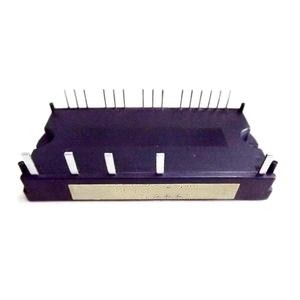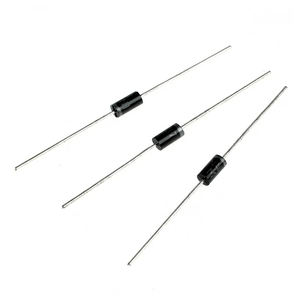Thyristors Online | High-Quality Power Semiconductors
Thyristor: The Silent Power Switch
(What Does Thyristor Do)
Ever wonder how your lamp dims smoothly or your power drill adjusts speed? Meet the thyristor. This little semiconductor device controls electricity in ways ordinary switches can’t. It handles high power with reliability. Let’s explore this unsung hero of electronics.
1. What Exactly is a Thyristor?
Think of a thyristor as a super switch for electricity. It’s a solid-state semiconductor device. It has four layers of alternating P-type and N-type material. This structure gives it unique abilities. Unlike a simple on/off switch, a thyristor latches. Once triggered, it stays conducting until the current drops below a certain level. People often call it a Silicon Controlled Rectifier (SCR). SCR is actually the most common type of thyristor. Its main job is controlling power. It acts like a gatekeeper for large electrical currents. You give it a small signal, and it controls a much larger flow. This makes it perfect for managing motors, lights, and even power grids. It handles high voltages and currents efficiently. It’s rugged and lasts a long time. Understanding this device is key to many modern technologies.
2. Why Use a Thyristor Instead of Other Switches?
Why choose a thyristor over a regular switch or transistor? Several reasons make it special. First, it handles very high power. Transistors might struggle or overheat with big loads. Thyristors manage this easily. Second, it has a simple triggering mechanism. A small pulse at its gate terminal turns it on. Then it stays on without needing more signals. This latching action is crucial for many control circuits. Third, it’s efficient. Once conducting, it has a low voltage drop across it. This means less wasted energy as heat. Fourth, it’s robust. It can withstand high surge currents and voltages. This reliability is vital in industrial settings. Fifth, it allows precise control. You can precisely time when it turns on during an alternating current (AC) cycle. This controls the average power delivered to a load. Think dimming lights or controlling motor speed smoothly. For high-power AC control, thyristors are often the best choice.
3. How Does a Thyristor Actually Work?
Imagine a thyristor like a locked gate in a water pipe. The gate terminal is the keyhole. Normally, no water flows (the thyristor is off). Send a small burst of water (a current pulse) into the keyhole (gate). This unlocks the gate. Water then flows freely through the main pipe (from anode to cathode). Crucially, the gate doesn’t need to keep holding the key. The water flow itself keeps the gate open. Only when the main water flow stops completely does the gate slam shut again. This happens automatically when the AC current crosses zero. Technically, applying a small positive voltage to the gate relative to the cathode injects electrons. This triggers the internal PNPN structure into conduction. The thyristor then stays conducting as long as sufficient anode current flows. Removing the gate signal does nothing; the device stays on. It only turns off when the anode current falls below a minimum level called the “holding current.” This usually happens naturally as the AC cycle completes. Here’s a simple state table:
| Condition | State | Current Flow | What Happens Next |
| :————————– | :——– | :————— | :———————————— |
| No Gate Signal | OFF | Zero | Device blocks current |
| Gate Signal Applied | Turns ON | Starts | Latches ON even if gate signal removed |
| Sufficient Anode Current | ON | Full | Continues conducting |
| Anode Current < Holding | Turns OFF | Stops | Resets to OFF state |
4. Where Do We Find Thyristors in Action? (Applications)
Thyristors work behind the scenes everywhere. Their power control skills are essential. Look around your home first. That adjustable desk lamp? Its dimmer switch likely uses a thyristor. Modern washing machines and vacuum cleaners use them to control motor speed. Even some battery chargers rely on them. Step outside. Streetlights often use thyristors for efficient switching. Industrial settings depend on them heavily. They control massive motors in factories and conveyor belts. They manage powerful electric heaters and ovens. They form the heart of industrial battery chargers and uninterruptible power supplies (UPS). The big leagues are power transmission. Thyristors enable High-Voltage Direct Current (HVDC) systems. These move electricity vast distances with minimal loss. They help stabilize power grids. You'll find them in traction controls for trains and trams. Electric vehicles use them in charging systems. Renewable energy? Yes. They manage power flow from solar panels and wind turbines into the grid. Anywhere you need efficient, reliable control of high power, especially AC, thyristors are likely involved.
5. Thyristor FAQs: Clearing Up Common Questions
Let's tackle some frequent thyristor questions.
Q: Can a thyristor turn itself off?
A: Usually not by itself. It needs the main current to drop below its holding current. In DC circuits, this requires extra circuitry to force the current down. AC circuits are easier because the current naturally drops to zero twice per cycle.
Q: Are thyristors expensive?
A: Generally, no. Basic SCRs are quite affordable. Cost depends on voltage and current ratings. High-power industrial ones cost more, but their reliability and efficiency often justify the price.
Q: What's the difference between a thyristor and a transistor?
A: Both are semiconductors. But a transistor needs continuous control signal to stay on. A thyristor latches on with a brief pulse and stays on until the current stops. Thyristors handle much higher power typically.
Q: What makes a thyristor fail?
A: Common causes are overheating (poor cooling), voltage spikes exceeding its rating, or excessive current surges. Applying the wrong gate signal can also cause issues. Proper circuit design and protection are key.
Q: Are there different thyristor types?
A: Absolutely! The SCR is the classic. Others include:
Triac: Controls AC power in both directions (like a bidirectional SCR), great for lamp dimmers.
Diac: Often used to trigger triacs or thyristors.
GTO (Gate Turn-Off Thyristor): Can be turned off by a gate signal, useful for DC.
(What Does Thyristor Do)
IGCT (Integrated Gate-Commutated Thyristor): High-power version of GTO. Each type suits specific needs.


